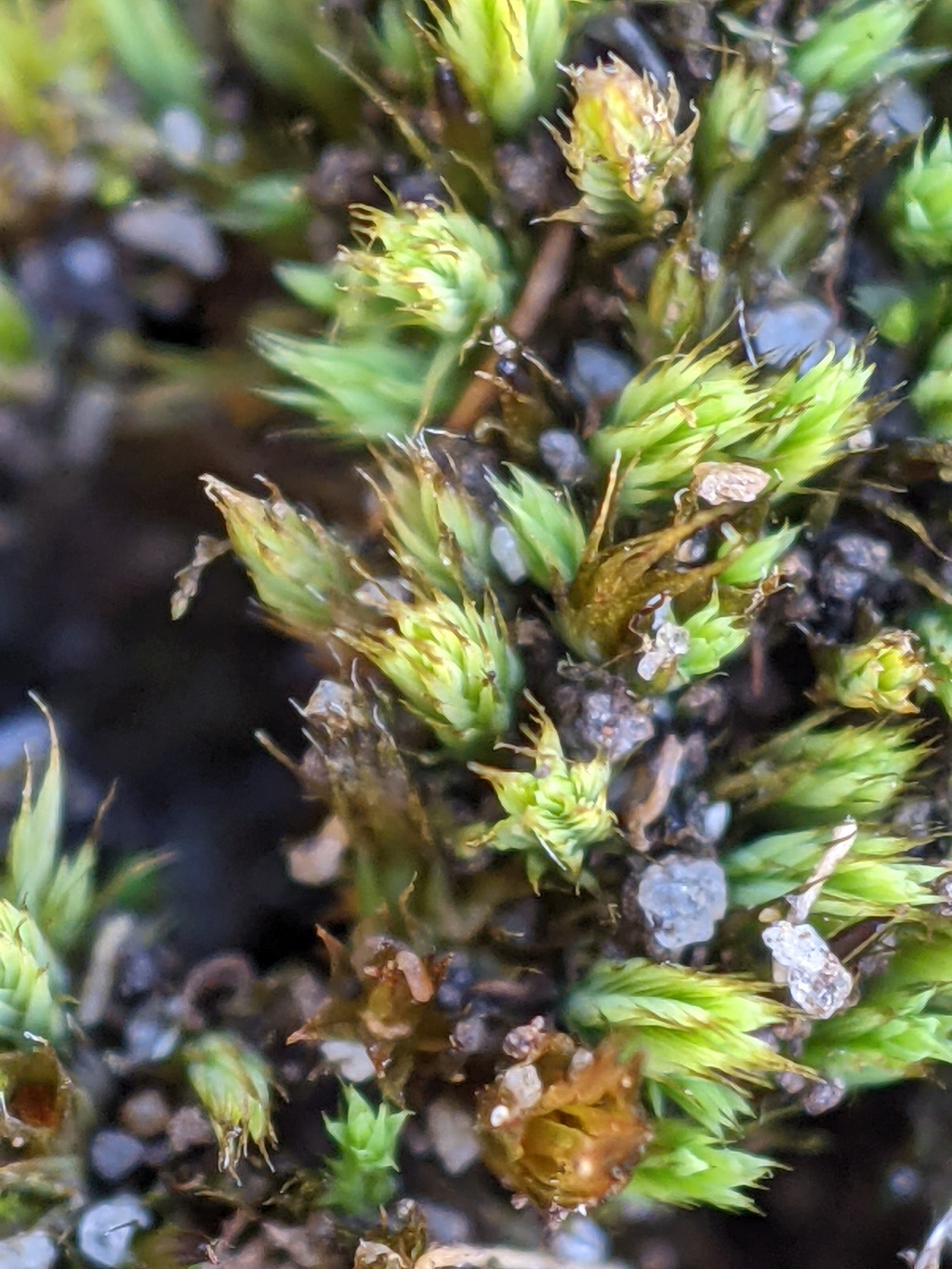Conostomum pusillum var. pusillum
Autoicous. Loose or dense tufts on soil. Stems erect, 2–12 mm long, simple in sterile plants, branching near apex in fertile plants, pale brown, covered at base with yellow- or red-brown rhizoids. Leaves not in distinct ranks, erect when moist, not altered when dry, linear-lanceolate, 1–2 mm long, 0.15–0.2 mm wide; apices acuminate; costae long-excurrent to form yellow, finely serrulate awn; margins serrulate in apical half, narrowly recurved in apical half, without a border; laminal cells mostly 18–45 μm long, 6–10 μm wide, prorate, becoming smooth and longer (to 75 μm long) at base. Setae 9–25 mm long, yellow-brown. Capsules erect to inclined or, rarely, pendent, globose to ovoid, asymmetric, 1.5–2.3 mm long. Operculum rostrate, 0.7–1 mm long. Peristome single, of 16 teeth.
Wim, GleP, Gold, CVU, GGr, NIS, EGU, HSF, HNF, VAlp. Mostly along the Great Dividing Range and most regularly recorded in the alpine zone near streams or bogs or among rocks in the Grampians, rarely recorded in moist sites in East Gippsland and south of the Great Dividing Range. Also NSW, ACT and TAS. New Zealand.
 Spinning
SpinningGilmore, S.R. (2006). Conostomum. Flora of Australia 51: 262–265.

